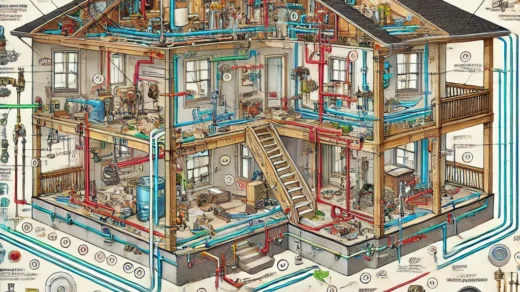Mastering the Art of Drawing:8mi9vnj1ccs= Cat
Drawing:8mi9vnj1ccs= cat is a fascinating challenge that blends creativity, observation, and technique. Cats have long captured the imagination of artists due to their graceful movements, expressive features, and captivating personalities. Whether you’re a beginner or an experienced artist, mastering the art of drawing cats can be both a rewarding and relaxing journey. This article will guide you step-by-step to understand cat anatomy, common mistakes, essential drawing techniques, and even the cultural significance of cats in art.
The Historical Significance of Cats in Art
Cats have played an important role in art across various cultures throughout history. From ancient Egypt, where they were worshiped as symbols of protection and grace, to modern-day cartoons and digital art, cats have consistently fascinated artists. In Japanese ukiyo-e art, for example, cats symbolize good luck and are depicted in beautiful, colorful forms. By understanding the cultural context, you can add depth and meaning to your drawing:8mi9vnj1ccs= cat journey.
Understanding Cat Anatomy
Before diving into drawing, understanding cat anatomy is crucial. This knowledge will form the foundation of your cat illustrations and help you draw them realistically and accurately.
Skeletal Structure
Cats have a flexible skeletal structure that gives them their unique ability to move gracefully. Key aspects include:
- Spine: Cats have a flexible spine that allows them to arch their back and twist their body with ease.
- Ribcage: The ribcage is small and oval-shaped, which adds to their agility.
- Legs: Long, slender legs with muscular thighs and shoulders help cats leap and pounce effortlessly.
- Paws: Each paw features retractable claws and distinct toe pads, essential for their balance and movement.
Muscular System
Understanding the muscular system is just as important to capture a cat’s fluid movements accurately:
- Shoulders and Haunches: These muscles give cats their powerful jumping ability.
- Back Muscles: These contribute to the flexibility that allows cats to twist their bodies.
- Facial Muscles: These muscles help convey the unique expressions that cats are known for.
Essential Drawing Techniques for Cats
To capture the lifelike nature of a cat, certain drawing techniques can make all the difference.
Gesture Drawing
Gesture drawing is a quick sketching method that helps capture the movement and essence of a cat’s pose. Start by blocking out the cat’s main body parts using simple shapes and sweeping lines. This approach helps you capture the overall flow and energy without getting bogged down by details.
Contour Drawing
Contour drawing involves tracing the outline of a cat without looking at your paper. It’s a great way to train your hand to follow what your eyes see, developing your observation skills. Focus on the edges and shapes you see in your reference.
Shading Techniques
Shading adds depth and brings your cat drawings to life. Identify the light source and pay attention to where the shadows fall on the cat’s body. Use various shading techniques like hatching and blending to create fur texture and add dimension.
Step-by-Step Guide to Drawing a Cat
- Start with Basic Shapes: Sketch simple circles and ovals to represent the cat’s head, body, and limbs. These shapes will help you lay down the foundation.
- Add Features: Draw the eyes, nose, and ears. Pay attention to their placement and size.
- Outline the Body: Connect the basic shapes with smooth lines to outline the cat’s body and add details like fur tufts.
- Refine Details: Add whiskers, claws, and the intricate details of the face to make the cat look realistic.
- Shading: Use light and shadow to add depth and make your drawing stand out.
Common Mistakes When Drawing Cats and How to Avoid Them
Even experienced artists can find drawing:8mi9vnj1ccs= cat challenging. Here are some common mistakes and how to avoid them:
- Incorrect Proportions: Cats have unique body proportions, with small heads and long legs. Studying references can help you get these proportions right.
- Stiff Poses: Cats are flexible, so try to capture their fluid movements using gesture drawing. Avoid rigid lines.
- Overly Symmetrical Features: A cat’s features are not perfectly symmetrical. Adding slight imperfections makes your drawing look more realistic.
Capturing Emotional Expressions in Cat Drawings
Cats have expressive faces, and capturing these emotions can add personality to your drawing. Focus on the eyes, as they are often the most expressive part of a cat’s face. Pay attention to the tilt of the ears, the curve of the mouth, and even the positioning of the whiskers to convey different moods like curiosity, playfulness, or contentment.
Digital Tools and Software for Drawing Cats
The rise of digital art has transformed how artists approach drawing:8mi9vnj1ccs= cat. Tools like Procreate, Photoshop, and Clip Studio Paint allow you to experiment with different brushes, colors, and styles. Digital art also gives you the flexibility to use layers, which can make adjustments easier without ruining your entire drawing.
Using References and Resources for Cat Drawing
Using references is key to improving your drawings. Look for high-quality images of cats on platforms like Unsplash, Pinterest, or stock photo websites. You can also use anatomy books or watch videos of cats to understand their movements better. The more you observe, the more accurately you can capture the essence of a cat in your art.
Depicting Different Cat Breeds
Different breeds have unique characteristics that make them interesting to draw.
- Short-haired Breeds: Breeds like the Siamese have sleek, smooth lines that require minimal fur detailing.
- Long-haired Breeds: Maine Coons and Persians have fluffy, voluminous coats, which you can depict with soft, layered strokes.
- Unique Breeds: The Sphynx, with its lack of fur and wrinkled skin, or the Scottish Fold with folded ears, offers unique challenges that can be rewarding to draw.
Creating Backgrounds and Environments for Cat Art
Adding a background to your drawing:8mi9vnj1ccs= cat can give your artwork a story. Whether it’s a cozy living room, an outdoor garden, or even an imaginative space like a cat in outer space, backgrounds can add context and make your drawing more visually interesting. Start simple—maybe with a cushion or a window—and gradually add more details as you feel comfortable.
Challenges Artists Face When Drawing Cats
Drawing cats comes with its own set of challenges:
- Capturing Movement: Cats are constantly in motion, which can make it difficult to sketch them accurately.
- Fur Texture: Different fur lengths and types require various drawing techniques to depict correctly.
- Proportions: Getting the proportions right, particularly the balance of the head, ears, and eyes, takes practice.
Commercial Opportunities for Cat Art
Cat art is incredibly popular, with opportunities ranging from freelance pet portraits to designing merchandise like T-shirts, stickers, and even NFTs. Brands often use cats to evoke playfulness and curiosity, so developing a unique style of drawing:8mi9vnj1ccs= cat could open doors to commercial projects.
Psychological Benefits of Drawing Cats
Drawing cats is not just about improving your artistic skills—it also offers psychological benefits. Creating art, especially drawing animals, has been shown to reduce stress and promote relaxation. Engaging deeply with the subject matter, like capturing the personality of a cat, can improve mindfulness and foster a sense of achievement.
Conclusion: Embrace the Journey of Drawing:8mi9vnj1ccs= Cat
Mastering the art of drawing:8mi9vnj1ccs= cat is a fulfilling journey that combines technical skills with creativity. By understanding cat anatomy, practicing essential techniques, and experimenting with different styles, you can create captivating feline art that reflects both accuracy and personality. Remember, improvement comes with consistent practice and observation. Whether you’re using traditional media or digital tools, keep exploring and, most importantly, have fun with your drawings.
FAQs on Drawing Cats
What tools do I need to start drawing cats?
You can start with basic tools like pencils, erasers, and a sketchbook. For digital drawing, software like Procreate or Photoshop is highly recommended.
How can I improve my cat drawings?
Practice gesture drawing regularly and observe real cats to understand their movements and anatomy better.
What’s the best way to draw realistic cat fur?
Use light, layered strokes in the direction of the fur’s natural growth. Varying pressure can add depth and realism.
Can I use color in my cat drawings?
Absolutely! Colors help bring out the personality of different breeds. Colored pencils or digital brushes work well.
How do I capture a cat’s personality in my drawing?
Focus on the facial features, especially the eyes and ears, to convey emotion. Adding small details like whiskers and fur texture also helps capture their unique character.


